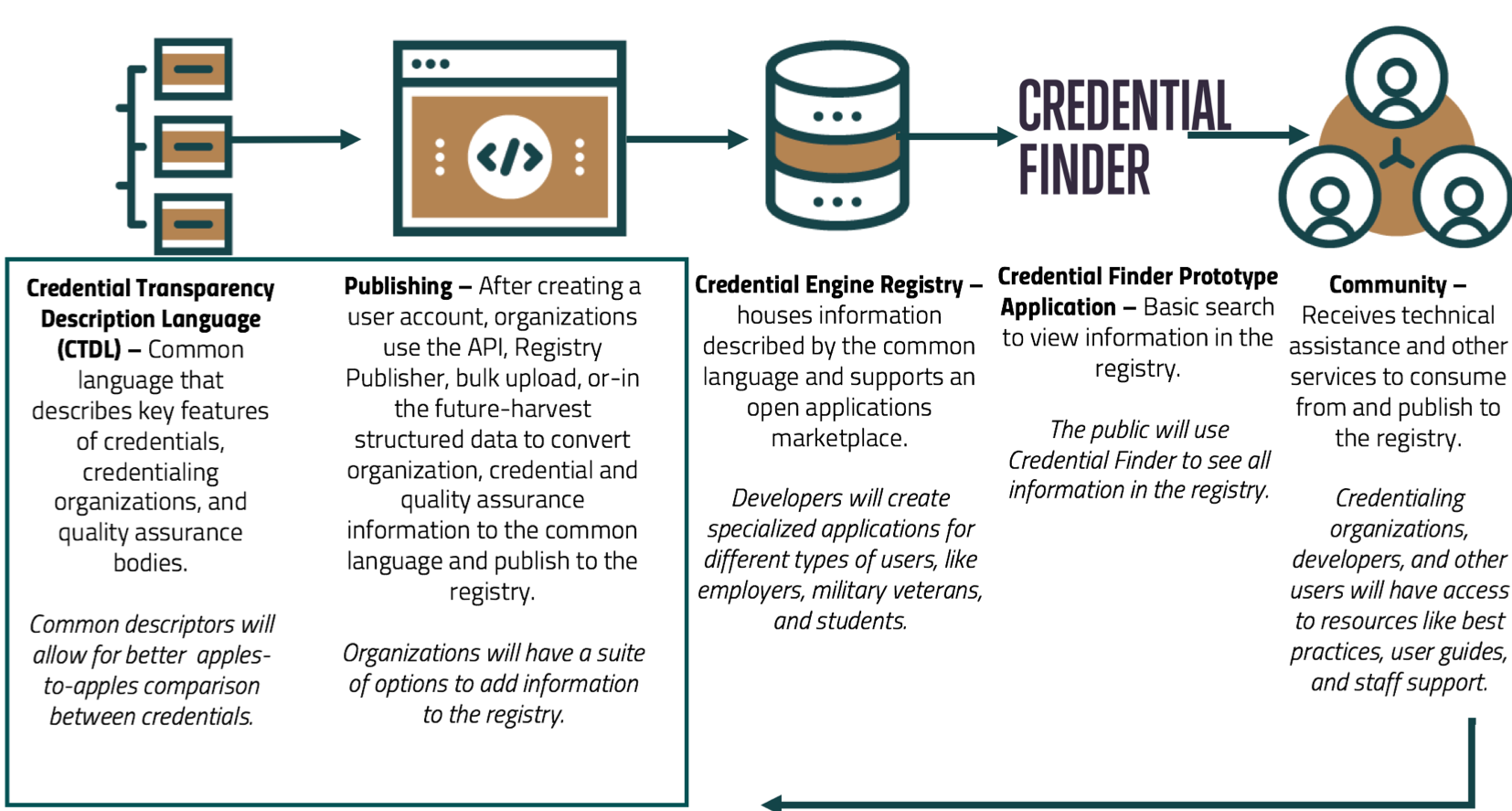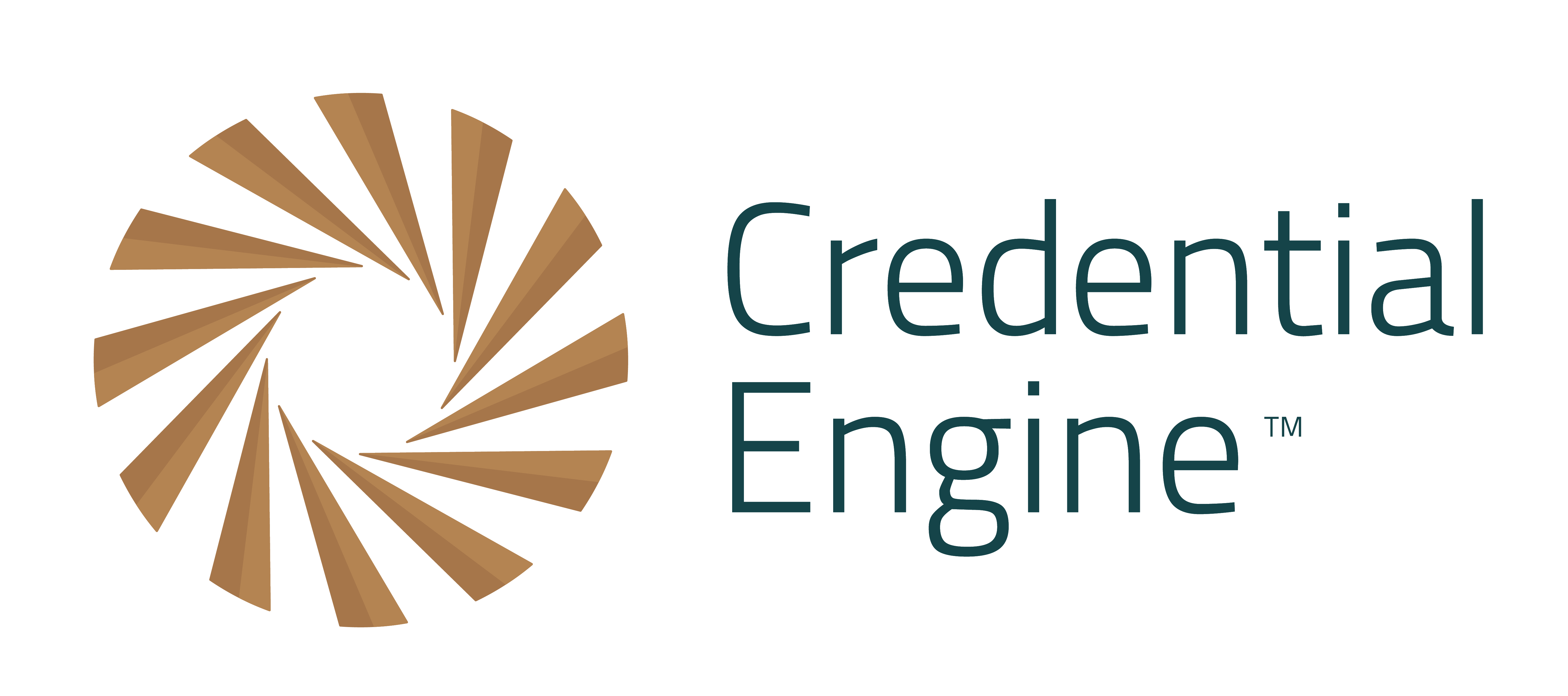What does the “higher education of the future” look like? Will it be online? On campus? Virtual? Will we still have the same 4 – 7 year undergraduate degree programs? Or will alternative credentials change the higher education landscape? This future seems a bit complex!
Luckily, today we’re joined by Carrie Samson, Communications Manager for Credential Engine, to discuss credential transparency and the credential marketplace. I feel that the Registry will assist in helping decrease some of that complexity in the future!
Thank you Carrie for joining us today on WCET Frontiers!
Enjoy the read and enjoy your day,
~Lindsey Downs, WCET
Preparing for the Future
How do we prepare higher education for the future? The economy is changing rapidly, potential students are looking for ways to parse through options, and employer needs are shifting—creating increased pressure on higher education. Moreover, the higher education landscape has become increasingly complex—with institutions creating new degrees, badges, microcredentials, and certificates. Higher education leaders know that they must make sense of this confusing credential landscape in order to meet all of these challenges if their institutions are to succeed. But how?
Starting Credential Engine
Launched in 2016, Credential Engine is a nonprofit organization whose mission is to create credential transparency, reveal the credential marketplace, increase credential literacy, and empower everyone to make more informed decisions about credentials and their value. We believe that a transparent credentialing marketplace is the key to not only meeting the challenges students, employers, and educators face today, but to setting students up for long-term success.
What does a Transparent Credentialing Marketplace Look Like?
Imagine this: a world where students can find and compare credentials head-to-head using criteria like:
- competencies,
- cost,
- time-to-completion,
- employer preferences,
- connections to other credentials,
- career pathways,
- and more.
Imagine a platform where higher education institutions can directly differentiate their programs from similar options, communicate effectively with employers about what their students know and can do, and easily identify best-in-class practices of leading credentials. Publicly launched in December of 2017, the tools and services from Credential Engine are now available to turn these possibilities into a reality.
Connect Credential Data in Real Time
Our work to bring credential transparency starts with our technologies. To create universal understanding around the hundreds of data points held within a credentials, we first had to create a universal language to describe credentials. Through the Credential Transparency Description Language (CTDL) and Credential Transparency Description Language-ASN (CTDL-ASN), there now exists first-of-their-kind credentialing languages with over 300 terms that can be used to describe credentials and competency frameworks. The CTDL and CTDL-ASN are open source, and free to access, meaning that higher education institutions can take advantage of them right now to transform their current disparate network of closed systems into one cohesive system that is built on linked data–allowing the data held in a professor’s course description about competencies to be connected to the department’s outcomes data or the business center’s employer preference data in real time.
Connect Data from Everywhere
There are more than 330,000 different credentials currently in the United States alone! Housing all of this data from the entire credentialing marketplace is no small feat.That’s why Credential Engine created the Credential Registry —a cloud-based storage system—that collects and connects data in new ways while ensuring that all credential data within the Registry is secure, accurate, and up-to-date. We have also devised a number of ways to upload data to the Registry, so we can meet an institution where their data systems are.
Expand Institutional Reach through Credentials
Credential Engine also supports an open platform for application development that opens up a world of possibilities for institutions.  Early interest in application development range from smoother degree verification to course catalog management, to streamlining assessment, transfer value, and more. Once we can see the credentialing landscape for what it is, and we can easily zoom in on a credential and see what’s inside. Institutions can build applications that will help them be more easily found by students, build better cases to employers looking to hire, and more responsive to departments looking to track trends.
Early interest in application development range from smoother degree verification to course catalog management, to streamlining assessment, transfer value, and more. Once we can see the credentialing landscape for what it is, and we can easily zoom in on a credential and see what’s inside. Institutions can build applications that will help them be more easily found by students, build better cases to employers looking to hire, and more responsive to departments looking to track trends.
Join In
There are numerous ways to join our Credential Engine work:
- Publish your credentials to the the Credential Registry for free!,
- Access the CTDL and CTDL-ASN (also for FREE!),
- our prototype search application, Credential Finder, will always be free to use.
We already have over 2,000 credentials published to the Registry from over 170 organizations. We’re working with states, sectors, and credentialing bodies to expand the Registry and begin revealing the credential landscape. Together, we know that we can prepare not only higher education for the future, but our students, workers, and economy.
[youtube https://www.youtube.com/watch?v=zkgm8nrQxW8&w=560&h=315]
To learn more, please visit www.credentialengine.org.

Carrie Samson
Communications Manager, Credential Engine
csamson@credentialengine.org


 Early interest in application development range from smoother degree verification to course catalog management, to streamlining assessment, transfer value, and more. Once we can see the credentialing landscape for what it is, and we can easily zoom in on a credential and see what’s inside. Institutions can build applications that will help them be more easily found by students, build better cases to employers looking to hire, and more responsive to departments looking to track trends.
Early interest in application development range from smoother degree verification to course catalog management, to streamlining assessment, transfer value, and more. Once we can see the credentialing landscape for what it is, and we can easily zoom in on a credential and see what’s inside. Institutions can build applications that will help them be more easily found by students, build better cases to employers looking to hire, and more responsive to departments looking to track trends.
